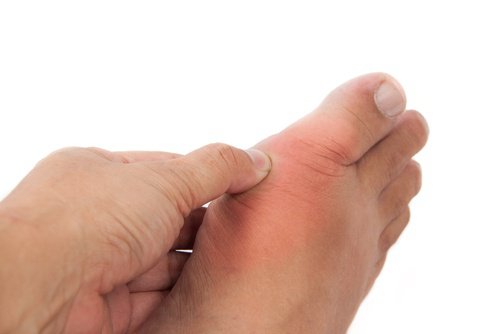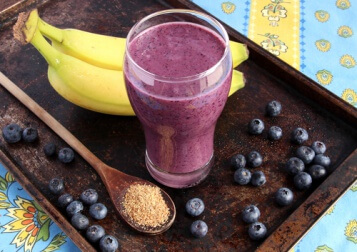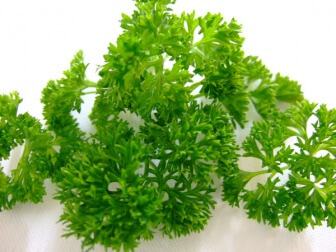Natural Aids for Uric Acid and Gout

Among the more common symptoms of this condition are stiffness, swelling, and pain in the joints, especially the big toe. When your uric acid levels are very high, it can trigger what’s more commonly known as “gout.” In today’s article you’ll learn about some of the natural treatments for it.
Is uric acid your enemy?
When you learn that the cause for gout is uric acid, it usually gets labeled as “evil” along with high stress, cholesterol levels, and more. But the problem lies in how much of it you have, not the presence of the acid itself.
Uric acid is a waste product your body produces out of purine, a compound that you ingest through your food (especially meat products). When it’s present at the appropriate levels, uric acid can help your body function properly, but too much of it can cause “gout,” medically known as “hyperuricemia.”
When this occurs, a type of crystal is formed in the joints that results in arthritis. People who have high levels of uric acid also frequently suffer from kidney stones. In other words, uric acid can cause particular sediments to form in various parts of the body, causing health problems.
How can you reduce uric acid?
As you’ve no doubt already guessed, a balanced and healthy diet can help lower your levels of uric acid. It’s essential that you make changes in your eating habits, because the amount of uric acid in your body depends on what you eat. That’s why you need to avoid consuming:
- Red meat
- Alcoholic beverages (especially beer)
- Sauces made with meat extracts
- Sardines
- Anchovies
- Mushrooms
- Refined sugars
- Whole milk
- Sausage
- Fried and fast foods
You can eat just about everything else minus what’s on this list. It is recommended, however, that you increase your consumption of fruits and vegetables, as well as whole grains and cereals (like millet and amaranth).
Also, don’t forget that you need to drink a lot of water every day to keep your kidneys working properly and eliminate uric acid through your urine. No doubt you’re already aware of how much is enough: eight glasses a day.
Read also:
Natural aids for uric acid and gout
Nature provides us with a pharmacy that contains all the treatments you’ll ever need. There are many plants and fruits with a helpful composition in reducing or eliminating the uric acid that’s present in the bloodstream. The best options are:
Blueberries
This small purplish fruit is recommended for a variety of disorders, such as:
- Renal problems
- Urinary tract infections
- Diabetes
- High blood pressure
Blueberry juice may help eliminate uric acid. To make it, you’ll need:
- ¼ cup of blueberries
- 1 liter of water
Boil the blueberries in the liter of water for three minutes and allow them to cool slightly. Strain the liquid and drink it through the day. Remember that to increase the effects, you can eat blueberries in the mid-morning or as a dessert, either with yogurt, juices, smoothies, or fruit salads.
Read also:
 Celery seeds
Celery seeds
In addition to its many other properties, this tiny seed is a natural diuretic and anti-inflammatory agent that helps eliminate uric acid and reduce joint pain.
It’s a good idea to consume 500 mg per day, although the dosage can vary from person to person. If you’re pregnant or have chronic or severe kidney disease, avoid consuming celery seeds.
Cherries
This is another small fruit that packs hundreds of benefits. Cherries help reduce joint pain and levels of uric acid in the bloodstream. Eat a handful of them a day or add them to your recipes to enjoy their benefits.
Parsley
This is one of the most commonly used herbs in the kitchen that’s also well known for its diuretic properties. It may also have beneficial properties for people who are suffering from gout.
You can add parsley to your recipes to enhance their flavor, or drink it as a tea (it’s not recommended for pregnant women because it has been associated with miscarriages).
Ingredients
- 2 tablespoons of chopped parsley (30 g)
- 1 cup of boiling water (250 ml)
Preparation
Add the parsley to the boiling water and let it sit for five minutes. Strain the liquid and drink it. You can take this up to two times a day and sweeten it with honey or stevia, to your liking.
 Cayenne pepper
Cayenne pepper
Cayenne pepper has numerous anti-inflammatory properties, so it’s a good option for treating joint pain when high levels of uric acid are present. Remember to only consume a small amount because it can increase your body temperature.
Alfalfa
This plant promotes your body’s natural detox process and it may also help to eliminate the “bad” cholesterol and uric acid that’s present in your bloodstream. You can consume alfalfa in a tea.
Ingredients
- 1 handful of alfalfa
- 1 cup of water
Preparation
Heat both ingredients in a saucepan and boil for three minutes. Cover and remove from heat for five minutes. Strain off the liquid, sweeten it to taste, and drink. But don’t drink more than two cups a day.
Red clover
This plant has thousands of health benefits; improving your body’s removal of toxins is one of them. It’s perfect for patients with gout who want to detox their body. You can also consume it as a tea.
Ingredients
- 2 tablespoons of dried red clover leaves (30 g)
- 1 cup of boiling water
Preparation
Add the leaves to the boiling water and allow them to steep for six minutes. Strain off the liquid, sweeten if desired, and drink immediately.
All cited sources were thoroughly reviewed by our team to ensure their quality, reliability, currency, and validity. The bibliography of this article was considered reliable and of academic or scientific accuracy.
-
Carvajal, C. (2016). El ácido úrico: de la gota y otros males. Medicina Legal de Costa Rica.
-
González, A. (2003). MANEJO DE LA GOTA : Revisión. Revista de Posgrado de La VIa Cátedra de Medicina.
-
Fernández, D. G., Londoño, J., Santos, P., Reyes, E., & Valle, R. (2009). TRATAMIENTO DE LA GOTA AGUDA. ReViSta.
This text is provided for informational purposes only and does not replace consultation with a professional. If in doubt, consult your specialist.








